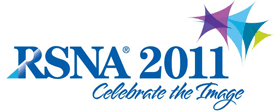
Abstract Archives of the RSNA, 2011
LL-INS-SU2A
Local Window/Level Transform: How to See Everything at Once
Scientific Informal (Poster) Presentations
Presented on November 27, 2011
Presented as part of LL-INS-SU: Informatics
Oleg S. Pianykh, Presenter: Nothing to Disclose
The local brightness and contrast in medical images are distributed very unevenly, often obscuring important diagnostic details. Manual, region-specific window/level (W/L) adjustments used to be the only remedy to this problem. However, these linear adjustments can be tedious, as W/L chosen for one region may be inappropriate for the others. We propose a new nonlinear local window/level enhancement algorithm, which is identical to simultaneous window-level optimization at each local pixel neighborhood.
The algorithm is based on the idea of finding the optimal W/L settings for each pixel neighborhood:
- For a fixed step S (chosen close to 1/100 of the image size), the image is subdivided into region of interest (ROI) tiles, SxS pixels in size.
- Optimal window and level settings are computed for each tile, based on the local histogram analysis. This results in locally-optimal window Wn and level Ln values, defined for each SxS tile Rn.
- The distribution of optimal Wn and Ln is analyzed over the entire image area, to filter out noise and background, to preserve structural edges, and to provide smooth W/L transition over each SxS square boundary.
- Corrected Wn and level Ln values define a nonlinear W/L intensity transform, optimized over each local pixel neighborhood. This transform is applied to the image.
In the vicinity of fine image edges (organ boundaries, for example) we apply binary subdivision, recursively splitting the original SxS tiles into four (S/2)x(S/2) subtiles, for better detail localization.
The algorithm was applied to the images known for particularly uneven W/L distribution – digital mammograms and X-rays, where contrast is greatly affected by the local density of the tissues. In essence, our W/L-optimizing technique worked as local thickness equalization, rendering all image areas equally visible, and dense areas –transparent. As a result, the technique helped visualize hidden lesions, and provided a much better view of the structural image details.
Local nonlinear W/L optimization can be used to reveal hidden image details, and to display them simultaneously.
Local nonlinear W/L transform eliminates manual W/L adjustments, and helps locate clinically-important structures in a single view. This makes it a valuable tool in diagnostic imaging.
Pianykh, O,
Local Window/Level Transform: How to See Everything at Once. Radiological Society of North America 2011 Scientific Assembly and Annual Meeting, November 26 - December 2, 2011 ,Chicago IL.
http://archive.rsna.org/2011/11011823.html

